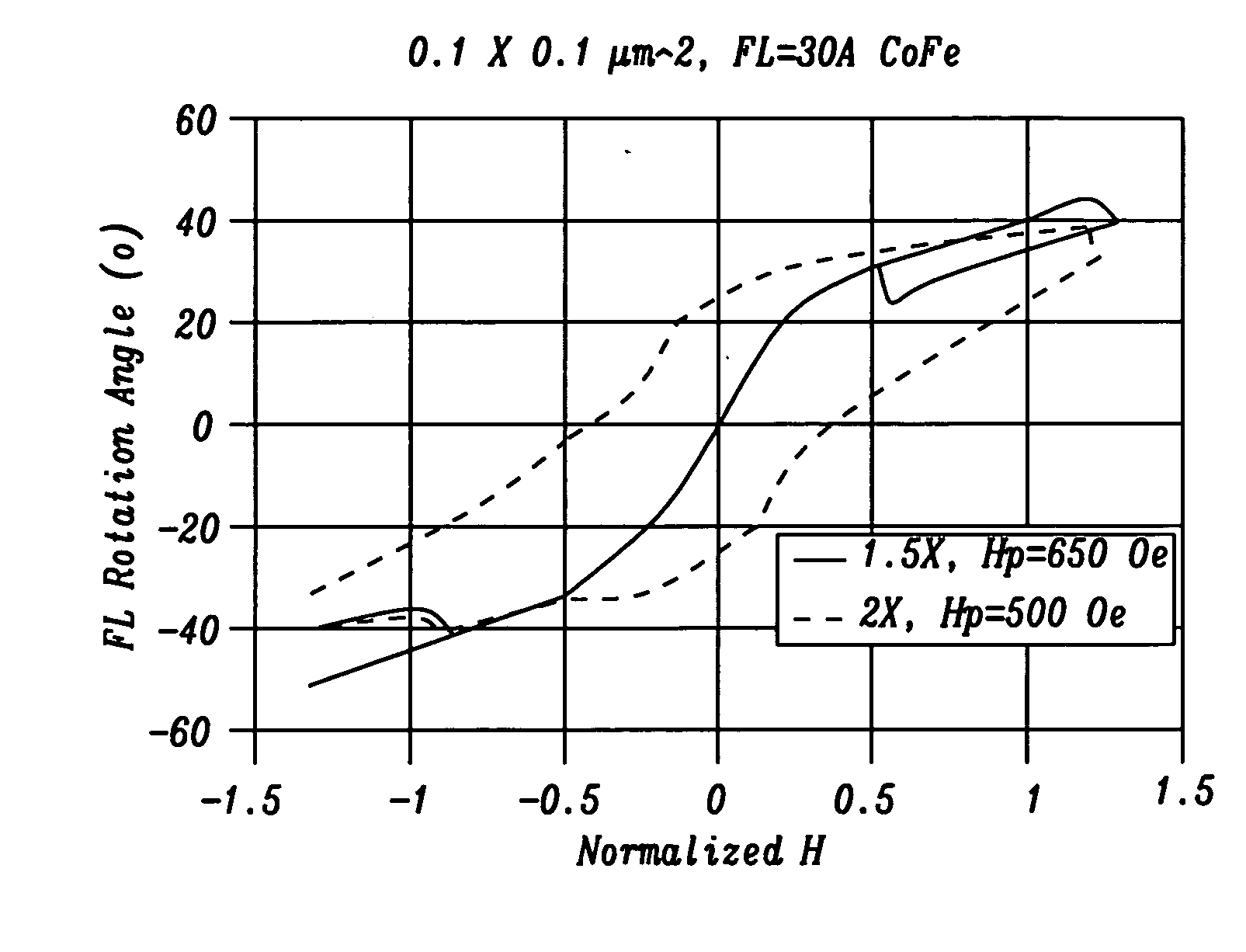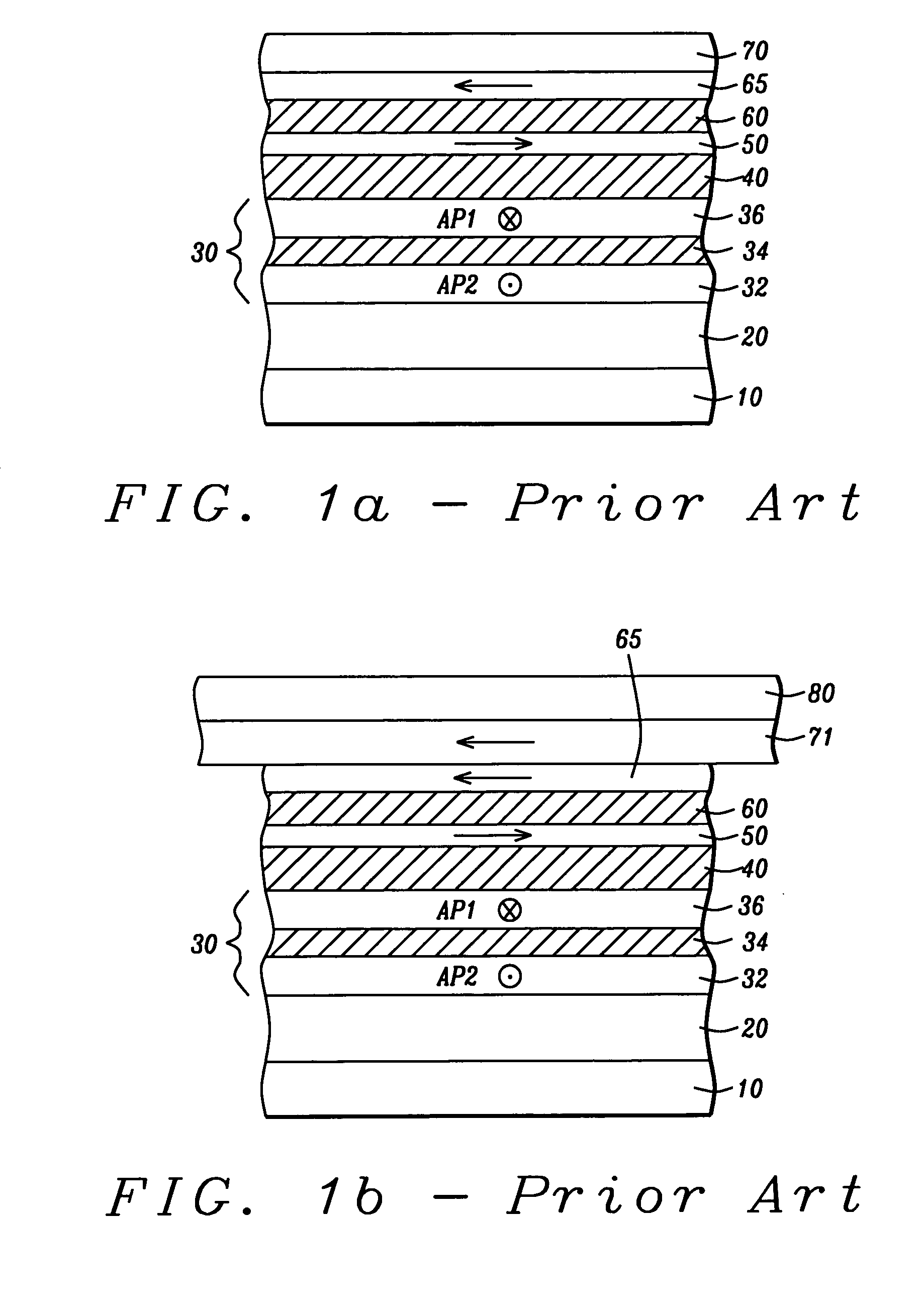Fabrication method for an in-stack stabilized synthetic stitched CPP GMR head
- Summary
- Abstract
- Description
- Claims
- Application Information
AI Technical Summary
Benefits of technology
Problems solved by technology
Method used
Image
Examples
Embodiment Construction
[0031] The present invention provides a CPP synthetic spin-valve sensor having a stitched configuration, a pillar portion on which is formed a portion of larger cross-sectional area. The longitudinal bias layer within this sensor is formed in two portions: one portion being within the pillar, proximate to the free layer but separated from it by a decoupling layer to prevent exchange coupling between the biasing layer and the free layer, the other portion being a tri-layer entirely within the stitched portion of the sensor, which tri-layer acts as a synthetic pinning structure.
[0032] Referring now to FIG. 3a, there is shown an ABS cross-sectional view of the configuration of layers (the stack) that will become the pillar portion of the sensor. This portion comprises the CPP synthetic spin-valve portion (SySV) (100), on which is formed the decoupling layer (110), the LBL layer (120) and a first capping layer (130). The decoupling layer is a trilayer of Cu / Ta / Cu, wherein both Cu layer...
PUM
| Property | Measurement | Unit |
|---|---|---|
| Temperature | aaaaa | aaaaa |
| Temperature | aaaaa | aaaaa |
| Time | aaaaa | aaaaa |
Abstract
Description
Claims
Application Information
 Login to View More
Login to View More - R&D
- Intellectual Property
- Life Sciences
- Materials
- Tech Scout
- Unparalleled Data Quality
- Higher Quality Content
- 60% Fewer Hallucinations
Browse by: Latest US Patents, China's latest patents, Technical Efficacy Thesaurus, Application Domain, Technology Topic, Popular Technical Reports.
© 2025 PatSnap. All rights reserved.Legal|Privacy policy|Modern Slavery Act Transparency Statement|Sitemap|About US| Contact US: help@patsnap.com



